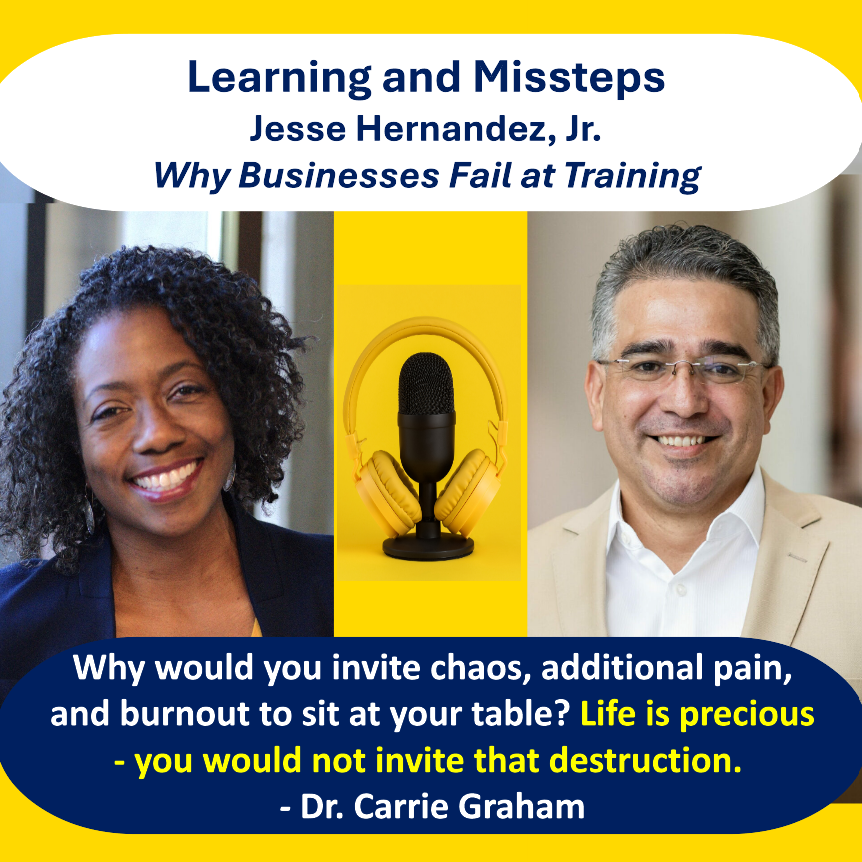
In this episode of the Learnings and Missteps podcast, host Jesse interviews Dr. Carrie Graham about training strategy, measuring ROI, and common organizational missteps in professional development. Dr. Graham challenges the traditional approach to training ROI by emphasizing that success comes from understanding who your workforce is as people and learners, not just their job titles or demographics. She shares her pivotal experience witnessing disengaged employees during mandatory sexual harassment training while the organization was simultaneously facing litigation for the same issue, highlighting how performative training wastes resources and fails to achieve actual behavioral change. The conversation explores how training strategy must begin with organizational vision and mission, ensuring that development programs reflect core values and actually serve the workforce rather than just meeting compliance requirements. Dr. Graham discusses the importance of asking hard questions, using data that organizations collect but often ignore, and moving beyond content-heavy approaches to focus on confidence, competence, and practical application. She shares personal missteps from her own career, including assumptions about learner preparedness that led to breakthrough moments in understanding barriers to success. The discussion covers the evolution of career paths, the importance of honoring personal growth cycles, and knowing when to quit situations that no longer serve you. The episode concludes with Dr. Graham's powerful reflection on her life's purpose as being "a light in others" through both professional training work and everyday human interactions that help people feel seen and valued.
Listen Here > https://www.youtube.com/watch?v=NkDD7X77Brw
Dr. Graham emphasizes that effective training and development must begin with understanding who your workforce is as people and learners, moving beyond demographics to create meaningful experiences that build confidence, competence, and practical application skills. She advocates for training strategies that align with organizational vision and values, focusing on empowering employees to go home fulfilled rather than depleted, ultimately serving both individual growth and business objectives.
Listen Here > https://www.youtube.com/watch?v=NkDD7X77Brw
Read > Training Strategy is Your Untapped Advantage
Subscribe > C.A.L.M. Email for weekly industry insights
Get practical tools, strategies, and resources to design and deliver impactful training programs — right in your inbox.